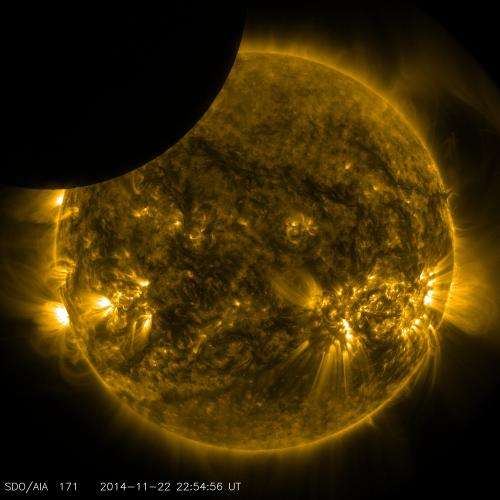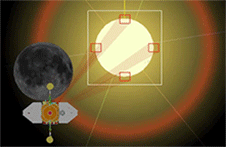The moon partially obscured the view of the sun from NASA's Solar Dynamics Observatory, or SDO, on Nov. 22, 2014. This lunar transit was visible only from SDO's point of view. Credit: NASA/SDO
On Nov. 22, 2014 from 5:29 to 6:04 p.m. EST., the moon partially obscured the view of the sun from NASA's Solar Dynamics Observatory. This phenomenon, which is called a lunar transit, could only be seen from SDO's point of view.
This animated gif shows how the moon passes in between NASA's Solar Dynamics Observatory and the sun, partially obscuring the view.
In 2014, SDO captured four such transits—including its longest ever recorded, which occurred on Jan. 30, and lasted two and a half hours.
SDO imagery during a lunar transit always shows a crisp horizon on the moon—a reflection of the fact that the moon has no atmosphere around it to distort the light from the sun. The horizon is so clear in these images that mountains and valleys in the terrain can be seen.
More lunar transits for SDO in 2014:
- Jan 30: www.nasa.gov/content/goddard/n … -sees-lunar-transit/
- July 28: www.nasa.gov/content/goddard/s … ves-a-lunar-transit/
- Sept 25: sdo-sees-an-autumnal-lunar-transit/" target="_blank">www.nasa.gov/content/goddard/6 … umnal-lunar-transit/
This animated gif shows how the moon passes in between NASA's Solar Dynamics Observatory and the sun, partially obscuring the view. Credit: NASA/SDO
Provided by NASA

























